The Denver Dream & The Sampling Clam
I recently returned from a teaching (learning) trip to the Rocky Mountain Weavers Guild in Denver, CO. What a joy! Despite the usual ordeal/discomfort of air travel the trip was invigorating and inspiring. I was met and transported to and from the airport (arrived to warm rain with just enough daylight to catch a glimpse of the misty mountains in the distance) by a meticulous weaver Claudia A. I was taken to the fab home of another amazing weaver, former shepherd and scientist Judy L. Judy’s house is in a Denver neighborhood of mostly brick, craftsman style houses from the early 20th century. The neighborhood is a stone’s throw from a park with a lake, the streets are tree-lined and all the yards were showing the very first beautiful signs of spring. In a word, perfect!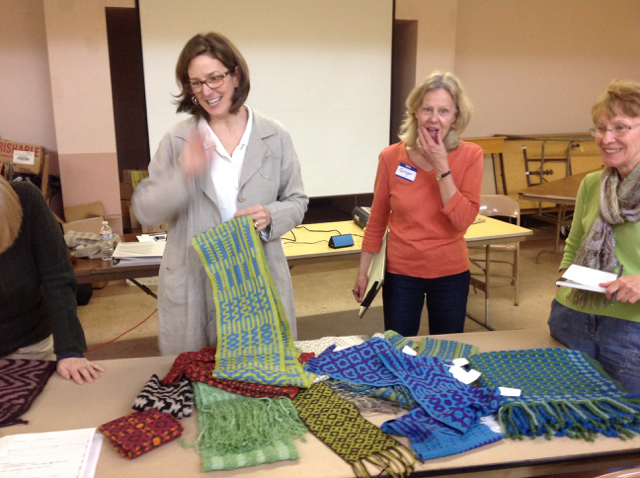
The class participants were an awe-inspiring line-up of accomplished weavers whose work may be familiar to many of you. But despite their intimidating status in the weaving world (and outside it) they were a dream class. As I may have mentioned in the past, I think the best weaving classes are joint endeavors. Because there is rarely a weaving class that doesn’t have a wide range of experience levels, it is often most effective and enjoyable if the material is presented and then the participants can share their own approaches, experiences. It creates an exponential learning effect, and that effect was highlighted in this class. In part because their guild is large and very vibrant and they have a awesome array of workshops throughout the year, the class was able to expand what I had to offer with notebooks from previous workshops in which the structure had been explored in different ways.
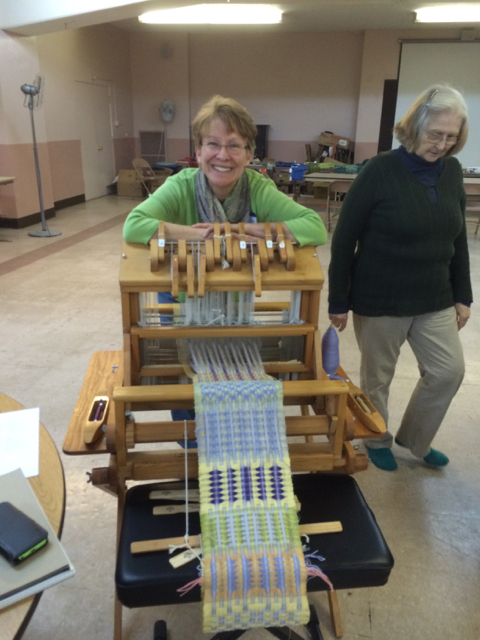
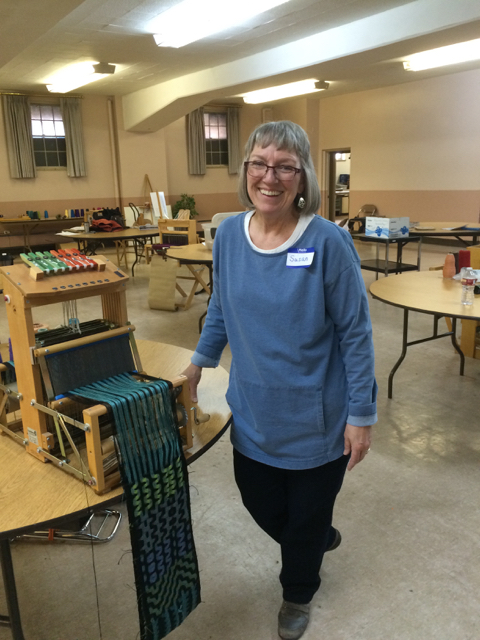
The guild is enviable in its vibrancy. I got to visit the Chatfield dye garden that the guild has created in cooperation with the Denver Botanical Gardens, with a gorgeous outdoor dye kitchen. I would have posted pics, but even though it was sunny 70s, spring had not quite sprung.
And I got to see photos of an large woven metal installation that the guild has participated in creating with the Boulder Weavers’ guild. (photo from the Boulder Weavers Guild FB page) at the Dairy Arts Center. Fabulous food!
Fabulous food! Fabulous people!
Fabulous people!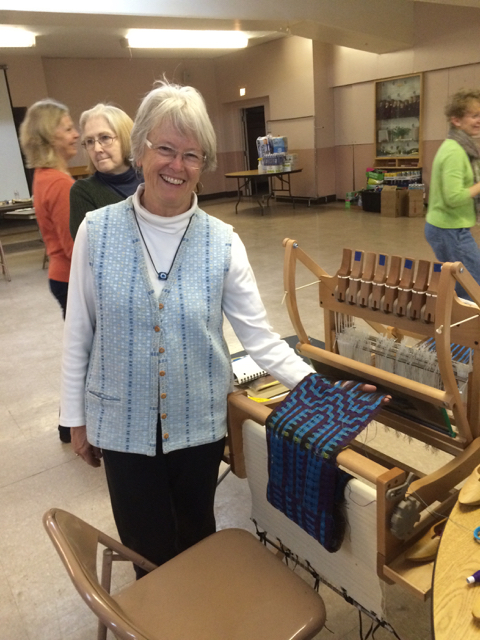
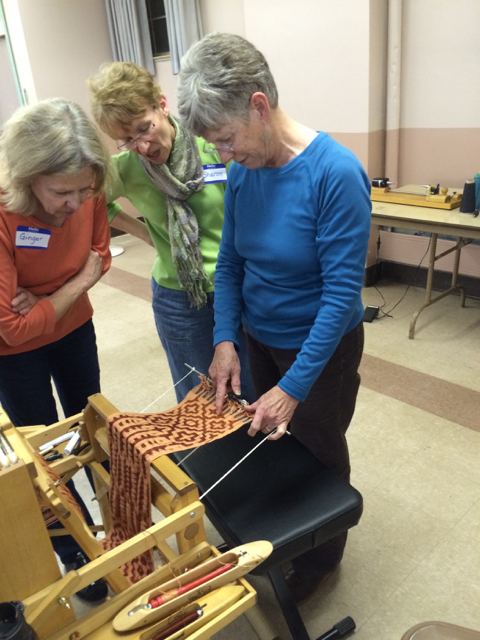
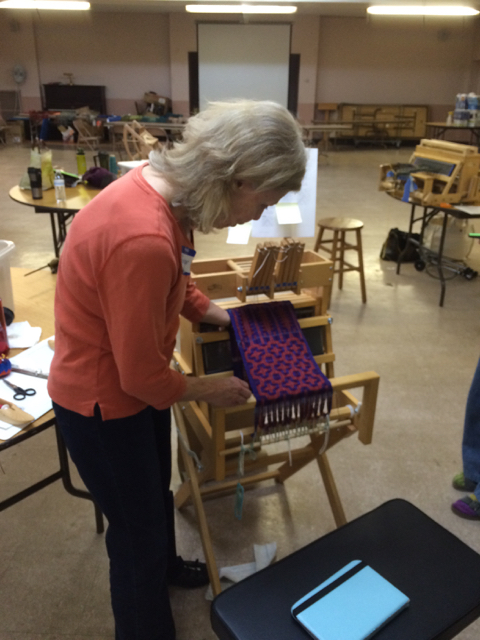
And to finish my visit I got to give a presentation to the whole guild, and I really couldn’t have asked for a more responsive, generous bunch of people. Kudos RMWG!! Check out their website: http://www.rmweaversguild.org/.
Now on to studio antics and the sampling clam . . . My family has been using the word “clam” to mean a tired joke ever since one of the kids came across it in a NYT article a few years ago.
HOW do jokes age? Like a bottle of fine red wine left on the kitchen counter a few days, without a cork. Yet as the most casual watcher of TV sitcoms knows, jokes can live well beyond their natural life span, losing more of their punch with each retelling. Just think about how many times you have heard these lines:
”Don’t go there.”
”Too much information.”
”Don’t talk to me. Talk to the hand.”
Or the time-honored, ”That’s why (I/he/ you/she/they) gets paid the big bucks.
”Concerned sitcom writers have come to call these jokes ”clams.” These clams are not to be confused with the jazz term that has come to mean ”bad note,” or with the popular shellfish. Comedy clams are jokes that you’ve heard once too often, that make you groan instead of laugh.
By DAVID BLUM
Published: December 9, 2001
So I have been thinking about the “sampling clam” among weavers, and how sampling or failing to sample or scolding about sampling gets a (somewhat tired) chuckle at guild meetings and workshops. What is the thing about sampling? Is it the “marshmallow test” of weaving? The reason this is on my mind is because of a recent failure to sample that has confused me. I had an “idea” (oh boy!) about combining a new (to me) structure that I have been messing with with some deflected double weave (a structure that I have been obsessed with for years). I wanted to use some of the springy 9/1 singles mill ends that I bought at WEBS awhile ago for a shawl on 24 shafts. (ended up needing only 16) So I drafted it out, played and played (on the computer) to get a look I liked, wound 5 yards of the 700 plus threads (notice that I didn’t start with a 2-yard 100 thread sample) and dressed the loom. I noticed that the warp looked a little open, but ignored my internal warning bell and proceeded to weave. I wove 1 repeat before I conceded that the sley was too open and my motif was not square.
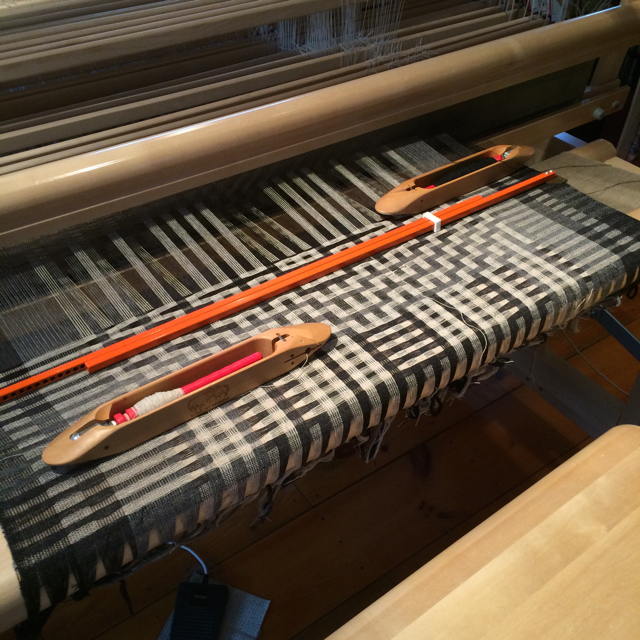 My solution was to double the weft (something I had intended to sample for this new structure anyway . . . I said to myself) And wove the whole shawl, which because of the 30 ppi, use of multiple shuttles and a temple took me a couple of days. I like it okay, but the motif is still somewhat compressed, the shawl is a little too short because of the springiness of the singles and because I wove it based on figuring the repeats rather than keeping a measuring tape on the piece. The thickness is dreamy, but would be dreamier for a blanket than a shawl
My solution was to double the weft (something I had intended to sample for this new structure anyway . . . I said to myself) And wove the whole shawl, which because of the 30 ppi, use of multiple shuttles and a temple took me a couple of days. I like it okay, but the motif is still somewhat compressed, the shawl is a little too short because of the springiness of the singles and because I wove it based on figuring the repeats rather than keeping a measuring tape on the piece. The thickness is dreamy, but would be dreamier for a blanket than a shawl 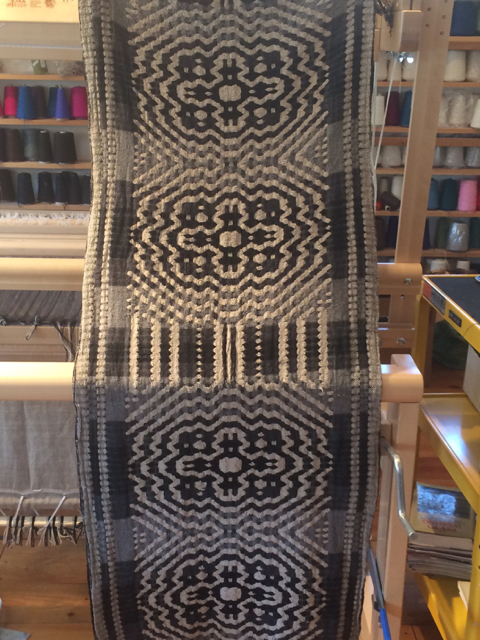
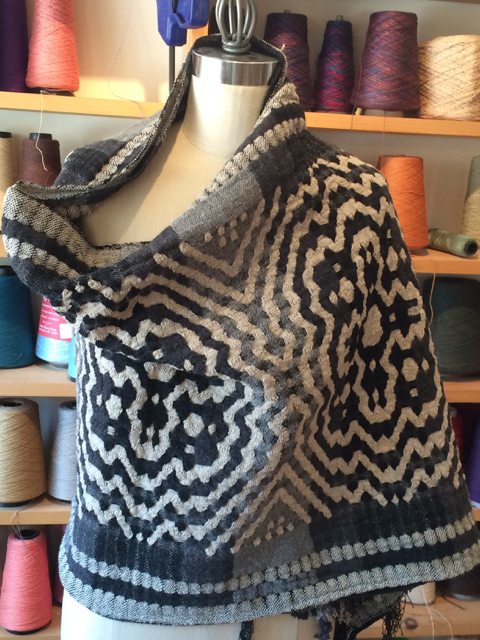
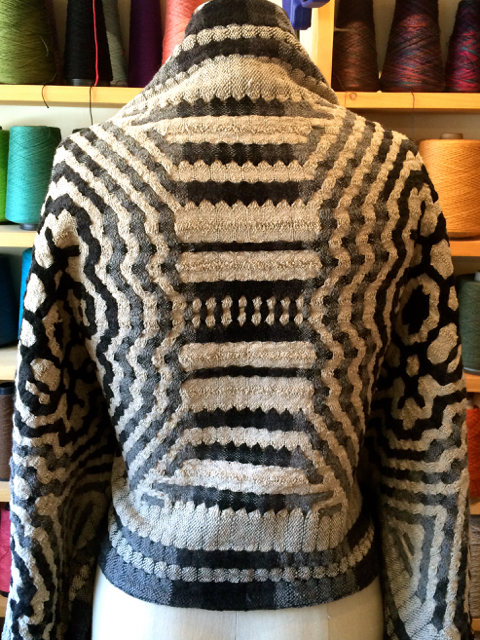
And my sampling issue is this: Sampling would have answered a couple of my questions, but not all. Weaving the whole shawl gives me all the input I need to perfect (well maybe not perfect, but improve vastly) the next one. HOWEVER, weaving this whole shawl over two plus days makes me not all that eager to do it again – even if I know the outcome will be closer to what I want . . . And here is the crux . . . because the outcome will be closer to what I expect/know will happen, I’m not that interested in doing it. So, does sampling ruin the surprise element that makes me want to continue weaving something, or would a small sample have answered many of my questions without wearing out my curiosity? Is this the ultimate marshmallow test failure? Input greatly appreciated!
And finally, a little trick I recently “discovered” (I should always put quote marks around discovered because inevitably, I will find my “discovery” has been “discovered” many times before). Anyway, I have started beginning and ending my fringe allowances with an inch or so of plain weave. This allows me to cut off the loom, serge the edge of the plain weave and then wash/finish however I want without even the most wild fringe turning into a tangled mess. I then cut off the plain weave and my fringe has been kept in order for me.
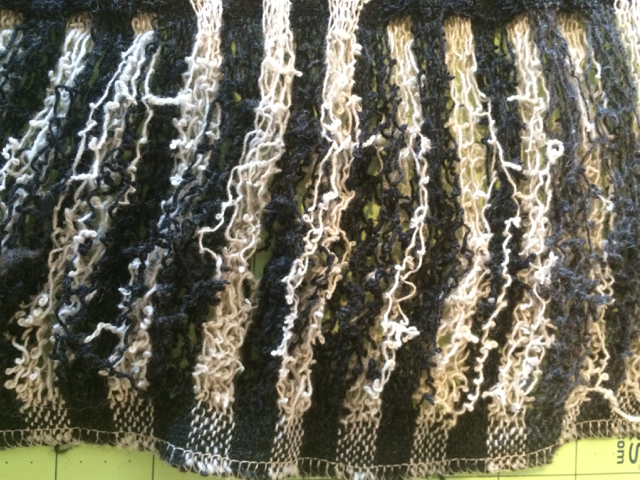

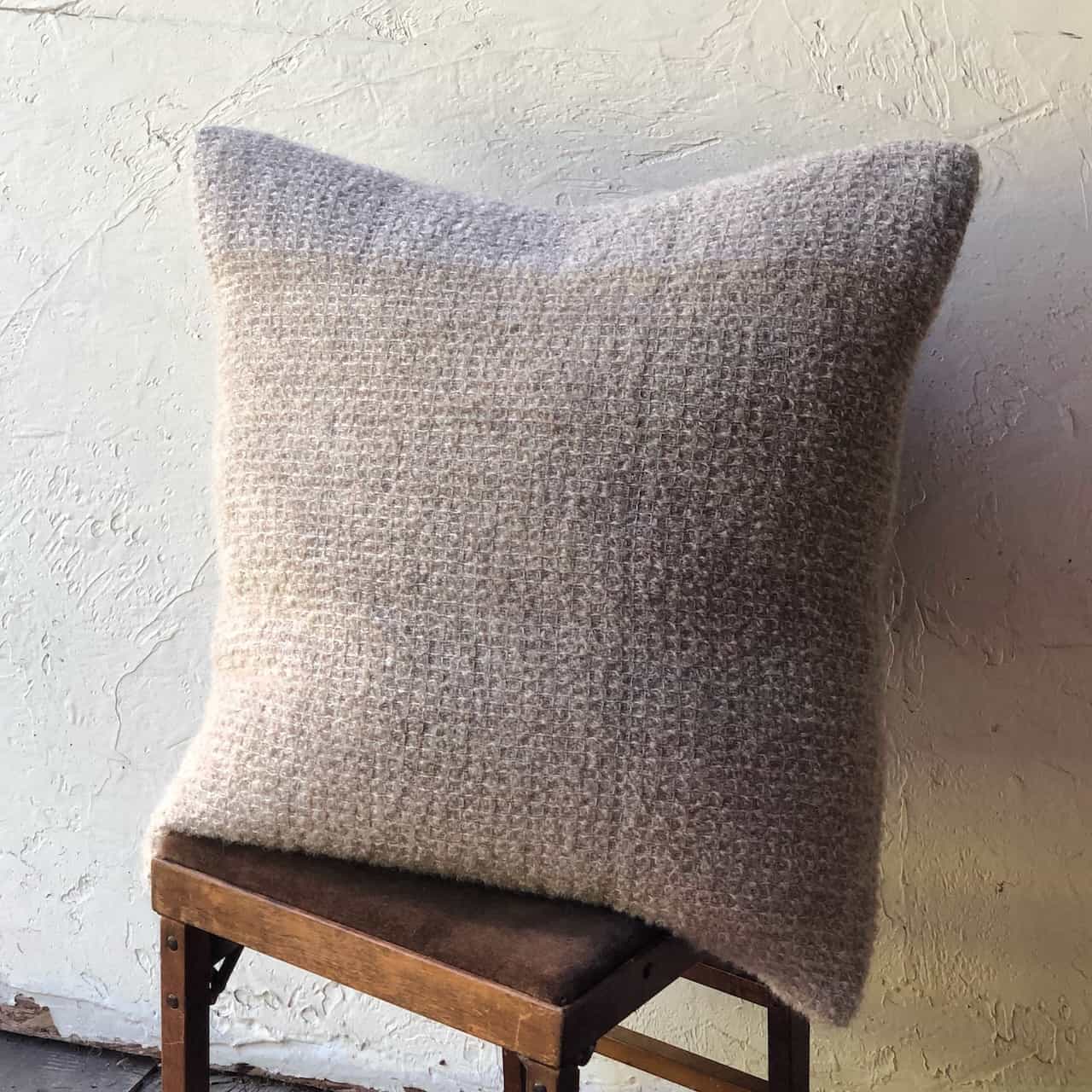
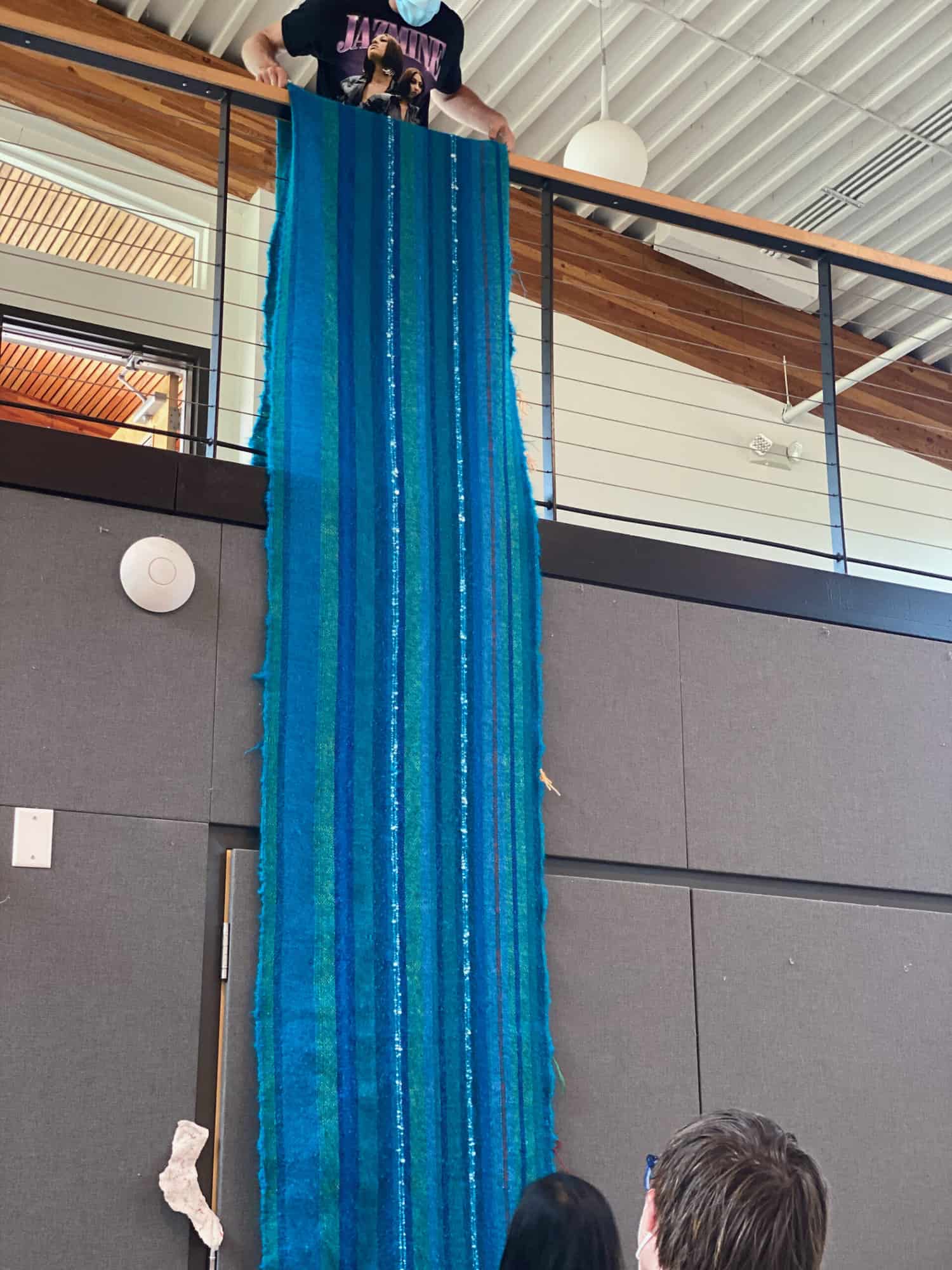
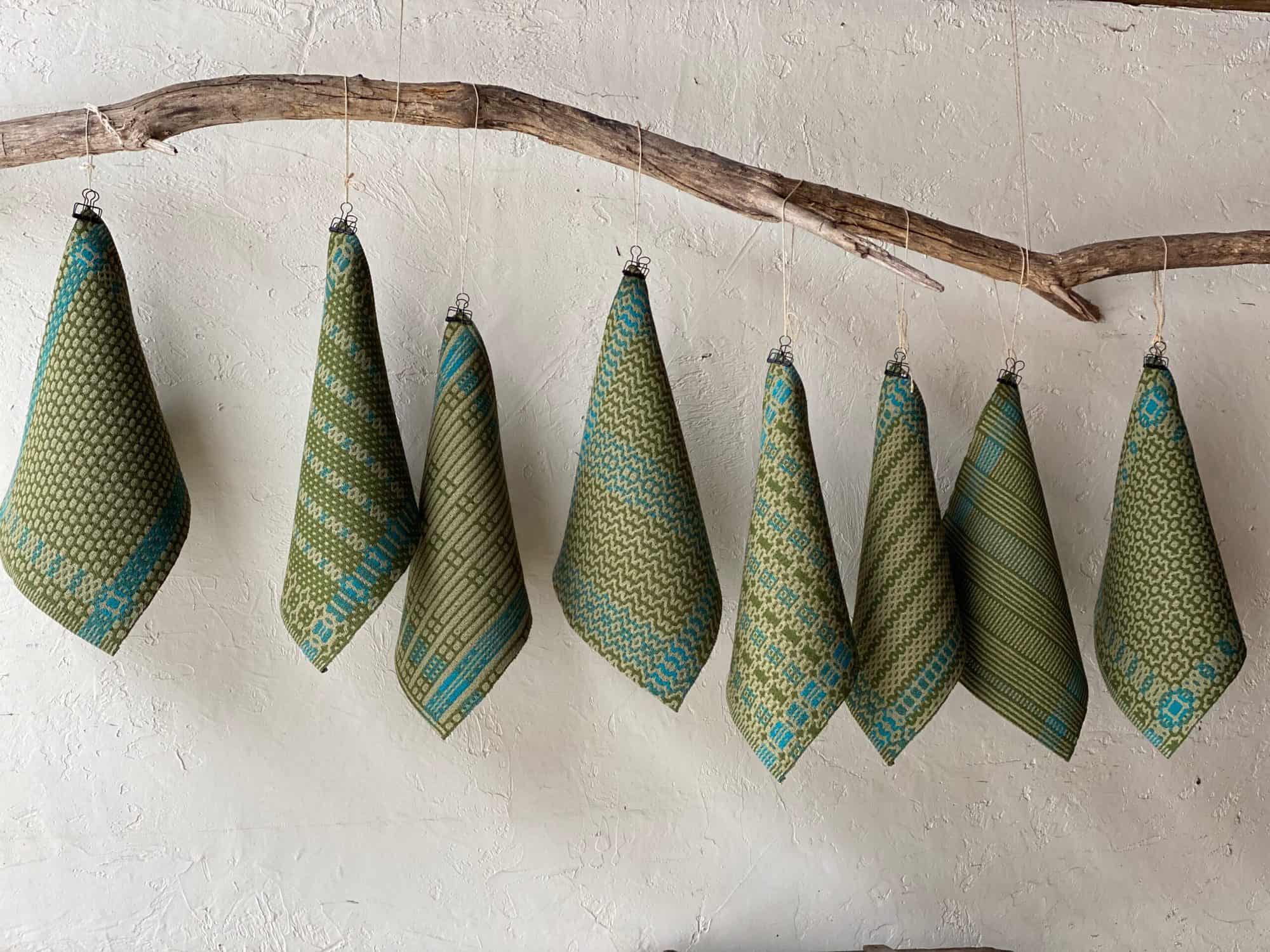
Cally
Interesting clam! I need a bit of time to develop a proper testable hypothesis here, but my opening gambit is that there is a spectrum of surprise. Where you land on it depends on a combination of total weaving experience plus the number of novelty elements in any specific plan… and where you are comfortable with landing depends on both personality and weaving intention (does it have to be perfect and repeatable, for instance). So I don’t think there can be a single right answer because those ingredients will vary so much.
I don’t think nagging or scolding is ever nice, but I think it may often be a response to those who want someone else to do the work: to tell them what sett for this yarn, this structure and so on so that *they* never have to sample. I meet this quite a lot online, and it is understandable but, after a while, slightly annoying. In a Guild setting, I can well imagine that it might drive some folk completely nuts!
Elisabeth Hill
Hi Cally,
I love the idea of a “spectrum of surprise”! I am going to attend more fully to where I land on it. I am sure I am not at the “no surprise” end though.
And you’re quite right about it being specific to the person and the piece. I always sample for a commission piece because I have to have control over the result. And since I like teaching samples for both “look at how well this worked” and “see how this went wrong” the pieces are the samples. And of course serendipitous elements are often what I like best. Thanks for the input – really helpful.
Cally
I’m not keen on the ‘no surprise’ option either, though as you say, it is sometimes important to have control over what you’re doing!
Claire
I like the back view on the mannequin – could it be used for a garment?
I don’t sample – the main reason is that I seem to have less and less time to give to weaving and I just need to get that feeling of getting something finished.
I don’t put on massive warps or push the boundaries of structure or materials – so it’s no great loss of things don’t work out perfectly
Elisabeth Hill
Hi Claire,
Great to hear from you. And it is a miracle that anything comes rolling off the loom when small children (beloved time eaters) need you. I think I mentioned to you before that I only wove 6-picks-per-inch, plain weave mohair throws when my kids were little – anything else would have been the road to madness:)) Plenty of time when they grow up (so fast!!) to delve into the complex weaves (or not – I still really love those early throws!) Of course, the image from the novel Silas Marner, of his baby (gently) tethered to his loom did pop into my head on occasion . . .
Jules Waddell
Now I think I understand my own insanity! I am obsessed with complex weaves and have small children. Lots of interruptions leads to lots of mistakes leads to … Mama’s craziness. Very little actually comes off my loom. Maybe it’s time to investigate mohair throws for a while — before I walk any further down the road to madness!
Elisabeth Hill
So hard!! I remember giving up my Sunday NYT when my kids were small (expectation management) because it would entice me to plan a leisurely Sunday of reading the paper (HA!) and then I would get mad. Instead I planned not-so-leisurely Sundays doing things that could be done in 5 minute increments and everyone stayed happy if under-informed!
Debbie
If you don’t want to go back and get a more satisfactory cloth (from your point of view, of course), then it strikes me it is time to cut and run. If you really loved the cloth, wouldn’t you go back and weave it the way you envisioned, surprise or no surprise? Wouldn’t you want to bring your finished thought into the tangible world to share with others?
For me, I think of surprise as during some phase of experimentation during pre (beginning of warp) or post (end of warp) sampling. A length of cloth that I have committed to producing is a finished thought of one sort or another, although I may think of a way to extend or improve on it while weaving.
Maybe because you are working in a structure you know quite well, you can often proceed straight to finished cloth with a few pleasant or intriguing surprises along the way? I guess one of the side effects could be occasional cloth that is overly “surprisy”.
Here we are back to the spectrum of surprise. I agree. A great concept.
Debbie
Elisabeth Hill
Hey Debbie,
Hope the toika is behaving! I cut and ran, and and now running back on a slightly different route (to extend the metaphor:)
I am finding a certain frustration level in my schedule these days where I am working under deadlines that cause me to either go back to tried and true, or use some new element that I then don’t have time to refine/play with the way I would like. Anyway, I don’t have a clear method . . . just madness at the moment. I guess I need to hope for some change in my life rather than hoping for a radical brain change at this “old dog” stage.
Debbie
The Toika is a joy. I hope yours is too.
Well, the side effect of being a valued teacher and editor is a certain level of madness, I guess. I like to think of life as a dance. Sometimes we sway more one way, sometimes the other, but ultimately the key is all in the balance. Here’s to hoping the balance is just right for you on this Mother’s Day.
Judy L
You’re no old dog and remember the brain is very plastic and can change at any time!
Elisabeth Hill
Hey Judy!
I’ll believe you (you’re a great example of mental agility), but my current creaky-brain state makes me a little skeptical . . .